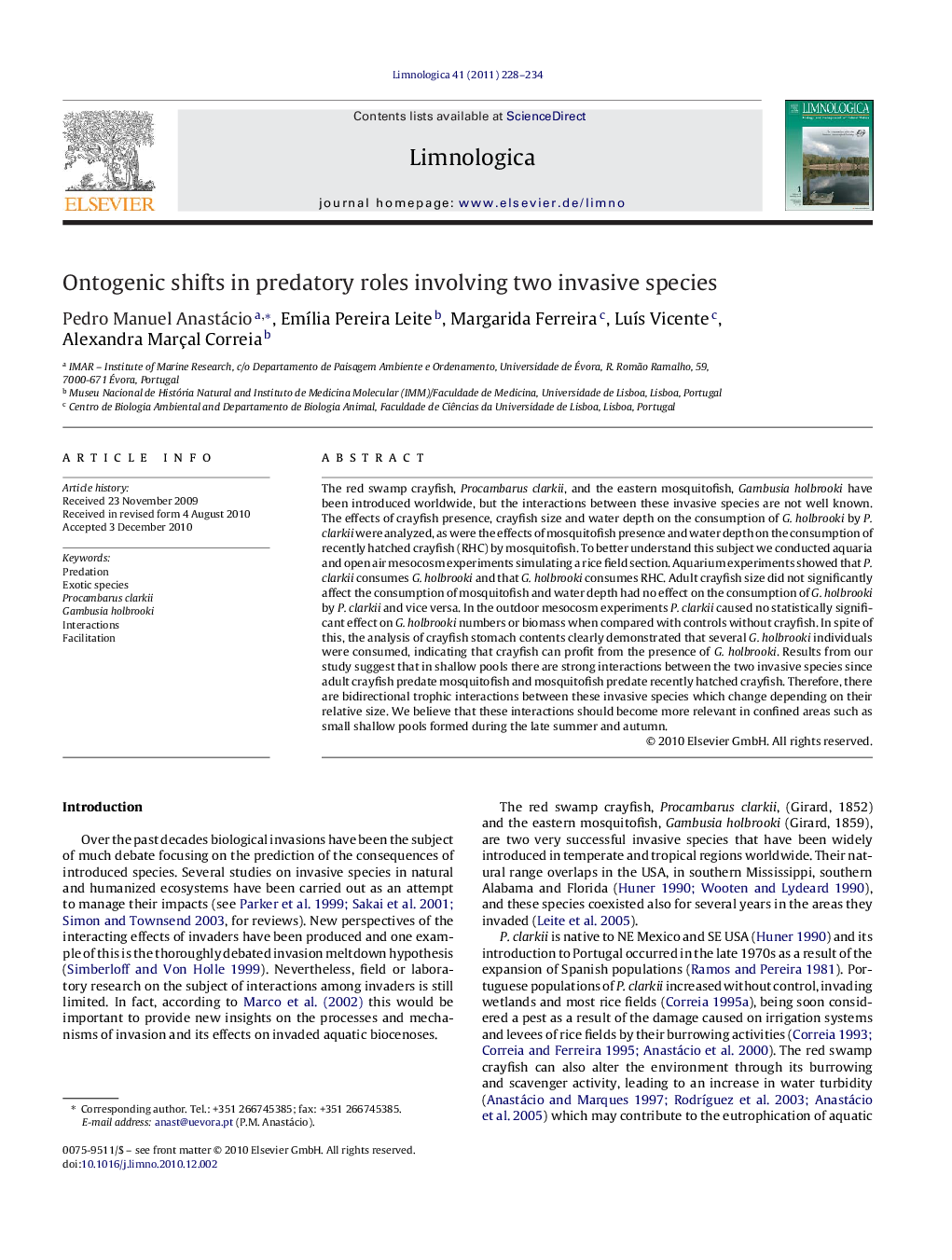| Article ID | Journal | Published Year | Pages | File Type |
|---|---|---|---|---|
| 4400451 | Limnologica - Ecology and Management of Inland Waters | 2011 | 7 Pages |
The red swamp crayfish, Procambarus clarkii, and the eastern mosquitofish, Gambusia holbrooki have been introduced worldwide, but the interactions between these invasive species are not well known. The effects of crayfish presence, crayfish size and water depth on the consumption of G. holbrooki by P. clarkii were analyzed, as were the effects of mosquitofish presence and water depth on the consumption of recently hatched crayfish (RHC) by mosquitofish. To better understand this subject we conducted aquaria and open air mesocosm experiments simulating a rice field section. Aquarium experiments showed that P. clarkii consumes G. holbrooki and that G. holbrooki consumes RHC. Adult crayfish size did not significantly affect the consumption of mosquitofish and water depth had no effect on the consumption of G. holbrooki by P. clarkii and vice versa. In the outdoor mesocosm experiments P. clarkii caused no statistically significant effect on G. holbrooki numbers or biomass when compared with controls without crayfish. In spite of this, the analysis of crayfish stomach contents clearly demonstrated that several G. holbrooki individuals were consumed, indicating that crayfish can profit from the presence of G. holbrooki. Results from our study suggest that in shallow pools there are strong interactions between the two invasive species since adult crayfish predate mosquitofish and mosquitofish predate recently hatched crayfish. Therefore, there are bidirectional trophic interactions between these invasive species which change depending on their relative size. We believe that these interactions should become more relevant in confined areas such as small shallow pools formed during the late summer and autumn.
